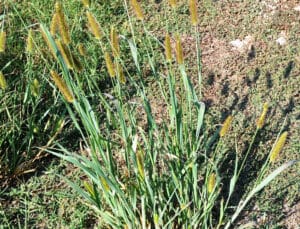Magnolia grandiflora ‘Bracken’s Brown Beauty’
Description
Despite its name, the Southern Magnolia isn’t just a southern tree…in fact, it can thrive up north. And it’s versatile – it’s considered an ornamental tree for its iconic blooms and a privacy tree for its large stature and evergreen leaves. But no matter how you use it, you can count on the Southern Magnolia to last. From its thick, deep green leaves that shine year-round to its steady, strong growth, the Southern Magnolia will thrive for generations, especially since it’s native to the United States. It provides an impressive amount of rich color when many other trees go dormant, offering a sweet place of refuge for birds, squirrels, and rabbits. In fact, it produces cones and small red seeds throughout winter.
And don’t forget its iconic creamy-white flowers. Adorning the tree for months, from May to as late as early fall, the Southern Magnolia’s huge, distinctive blooms are sprawling, revealing a bright white center and a sweet, unforgettable fragrance. Even better is the fact that all of this beauty is effortless because the Southern Magnolia is cold hardy down to 10 degrees, drought tolerant, thrives in most soil types, and withstands some flooding, making it ideal for the most problematic areas.
Planting
Choose a full sun location (6 to 8 hours of sun per day) away from cement sidewalks or driveways. The Southern Magnolia adapts to a variety of soil types but does prefer well-drained areas. Dig your hole slightly larger than the root system of the plant, 2 to 3 times the width and just as deep as the root ball. Position the tree in the ground and hold the tree straight as you begin to backfill the hole, tamping down as you go to prevent air pockets. Finally, water to settle the soil and apply mulch to conserve moisture.
Watering
Water your Southern Magnolia frequently, about once or twice weekly, in the first year of growth. After that, rainfall should be enough for the tree, and you should only have to water during extended periods of drought.
Fertilizing
You can feed your tree with a controlled-release fertilizer formula if new growth is noticeably slow. Fertilize in the early spring and follow the application instructions.
Pruning
Prune your magnolia at the first sign of any dead leaves, branches or flowers in late winter, right before spring. When pruning, remove the branch down to its base. Prune the lower branches as necessary as the tree grows.
| Growing Information | |
| Mature Height: | 30-50 ft |
| Mature Width: | 15-30 ft |
| Sunlight: | Full Sun |
| Bloom Time: | |
| Growth Rate: | Moderate |
| Grows Well in Zones: | 7-9 |
| Your Growing Zone: | 6 |





